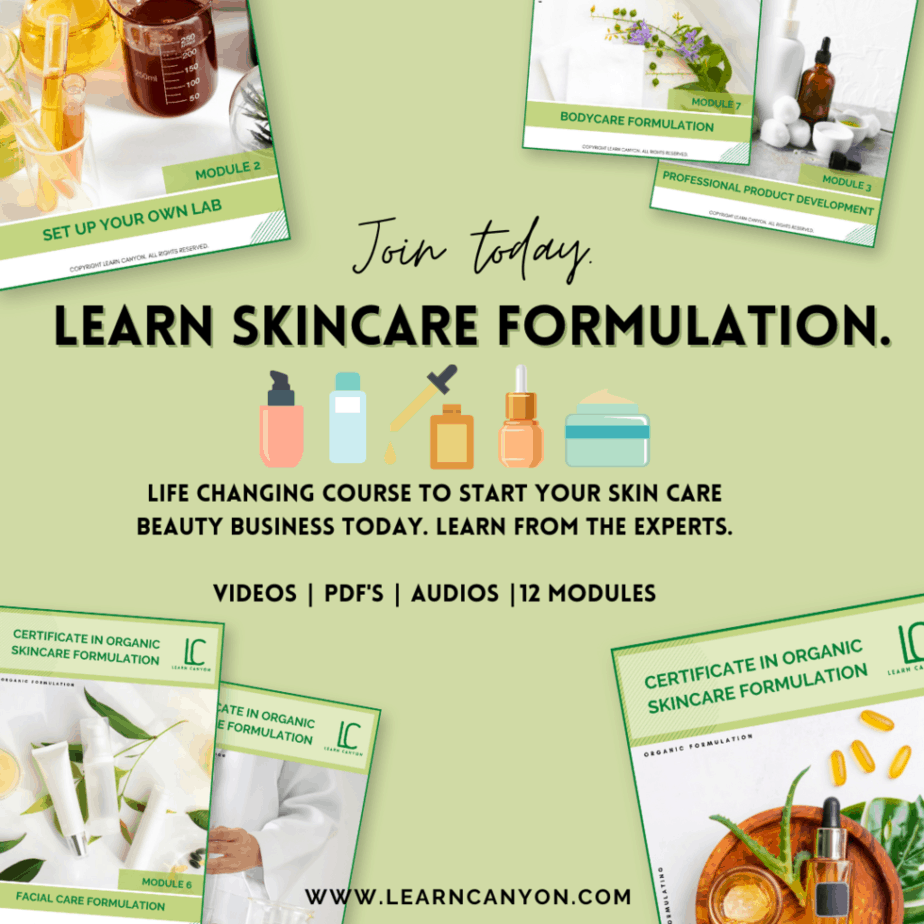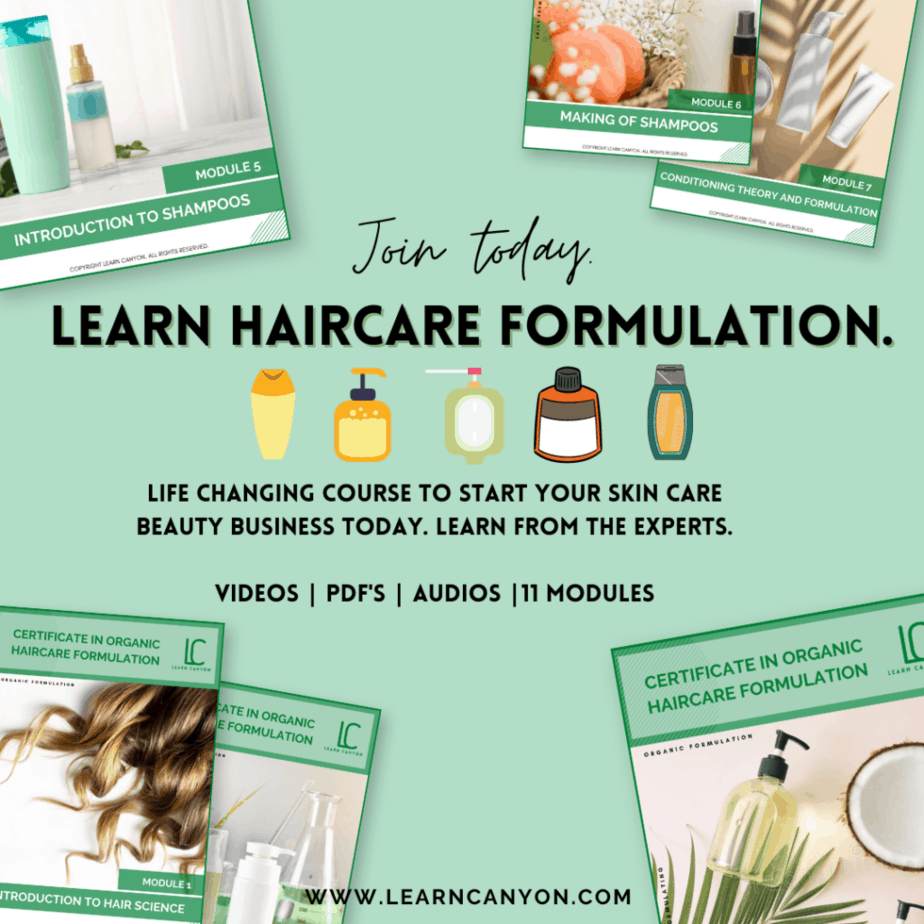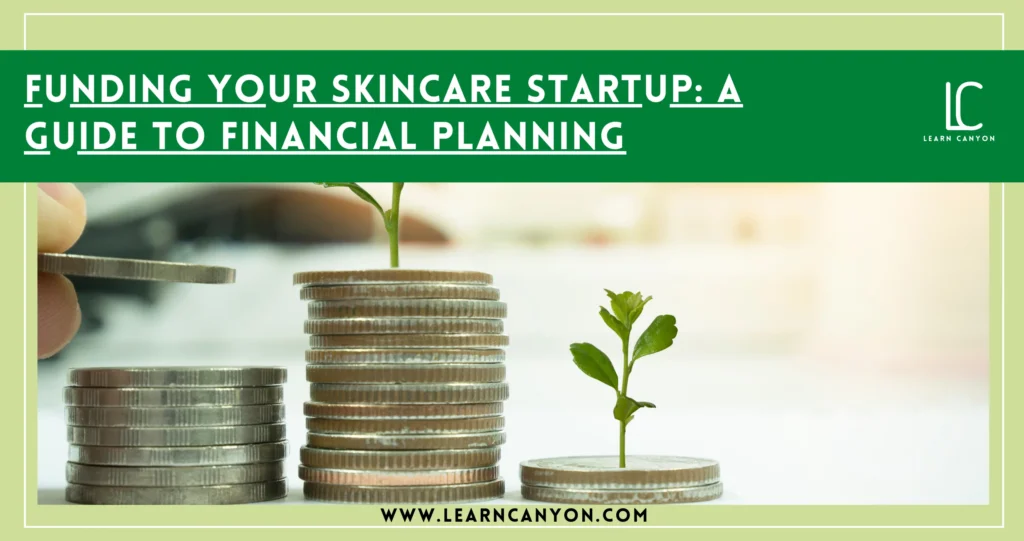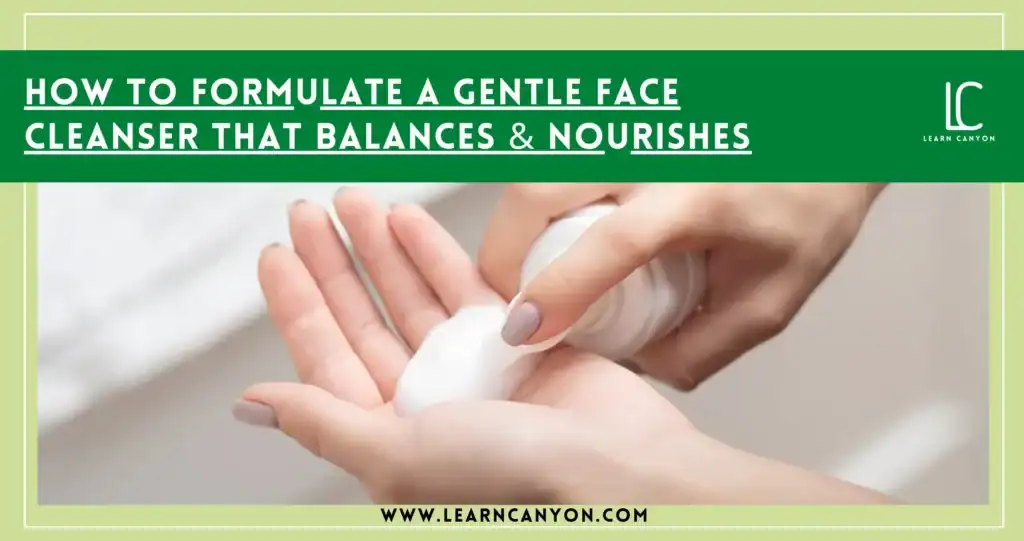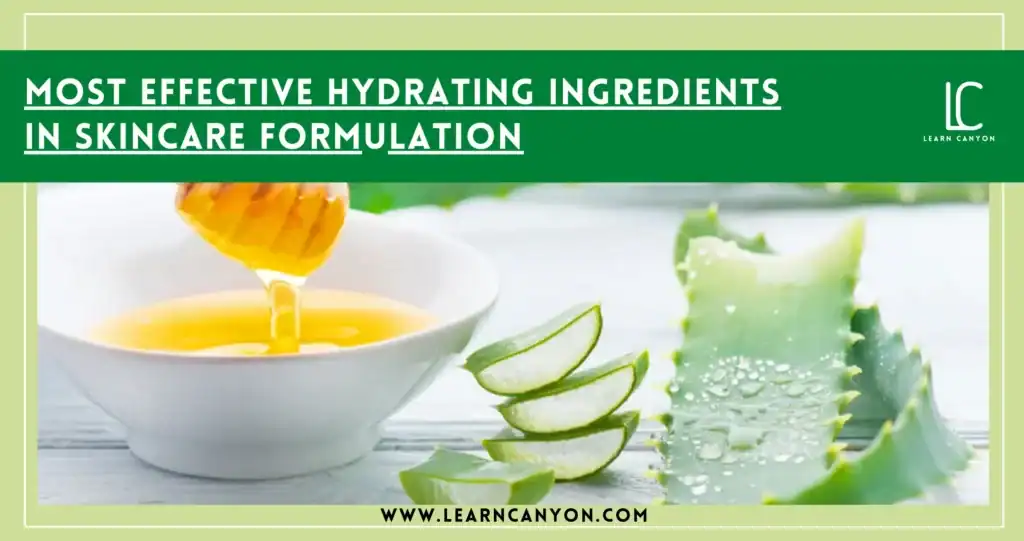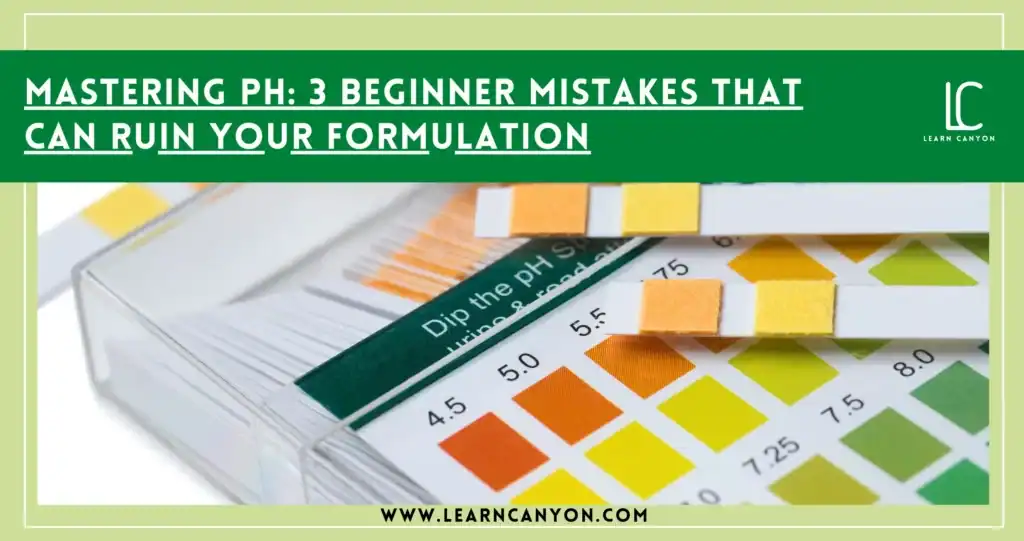Now, you’re prepared. You’ve examined ingredients and packaging and created an incredible “star product” that is likely to be a success.
You’re ready to launch your natural skincare line! You’re excited but need help to support your skincare line. Take a deep breath before you let that stressed little voice in your head prevent you from pushing on with your skincare brand.
Many people are unaware that starting a skincare startup can be exciting, but it also requires careful financial planning to ensure success. Securing funding for your skincare business is crucial for launching and growing your brand.
Whether you are seeking investors, loans, or other forms of funding, having a solid financial plan in place is essential for attracting support.
In this guide, we will explore the various avenues for funding your skincare startup, including traditional bank loans, venture capital, crowdfunding, and more.
We will also discuss the importance of creating a detailed financial plan, including budgeting for product development, marketing, and operational expenses. By understanding the financial landscape and planning accordingly, you can set your skincare startup up for long-term success.
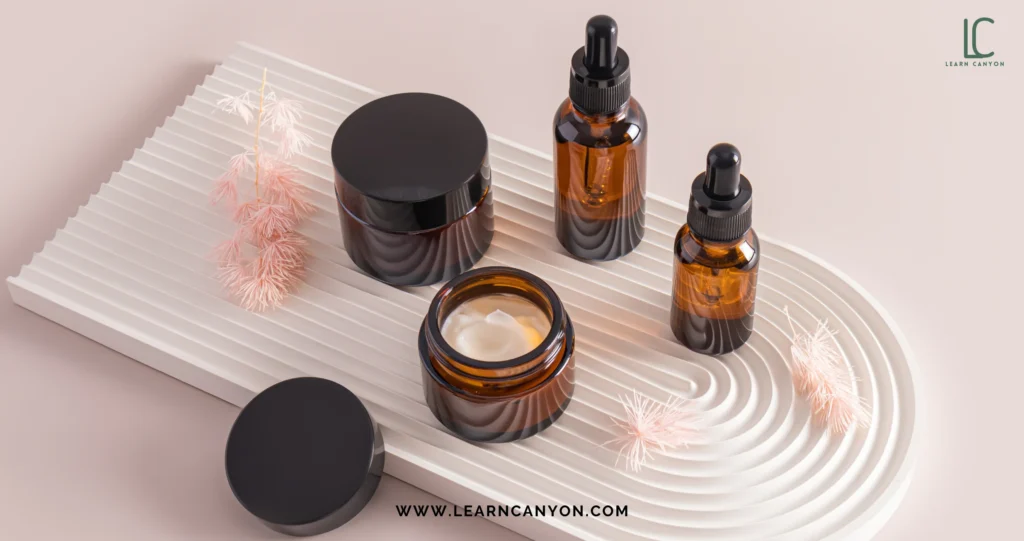
Understanding the Financial Planning In Skincare StartUp
Creating a financial plan for a skincare startup involves several key steps. It requires a comprehensive understanding of the market, clear business objectives, and a detailed breakdown of costs and revenue streams.
Here’s a step-by-step guide to help you navigate the financial planning process for a skincare startup:
1. Market Research and Analysis
- Industry Overview: Understand the skincare industry, including trends, growth drivers, and market size.
- Target Audience: Identify your target market, their preferences, and buying behaviours.
- Competitor Analysis: Analyze your competitors, their products, pricing, marketing strategies, and market position.
2. Business Model and Objectives
- Business Model: Define how your business will operate, including product lines, sales channels (online, retail, wholesale), and customer service.
- Objectives: Set clear, measurable objectives for your startup, such as market share, revenue targets, and customer acquisition goals.
3. Product Development and Pricing
- Product Costs: Calculate the costs of developing your skincare products, including raw materials, manufacturing, packaging, and labelling.
- Pricing Strategy: Determine your pricing strategy based on cost, competitor pricing, and perceived value by customers.
- Profit Margins: Ensure that your pricing allows for a healthy profit margin after covering all expenses.
4. Initial Investment and Funding
- Startup Costs: List all initial costs, including product development, equipment, licensing, legal fees, branding, and marketing.
- Funding Sources: Identify potential funding sources such as personal savings, loans, investors, or crowdfunding.
5. Revenue Projections
- Sales Forecast: Estimate your sales volumes for the first year and beyond, based on market research and marketing strategies.
- Revenue Streams: Identify all potential revenue streams, including direct sales, subscriptions, partnerships, and collaborations.
6. Operational Expenses
- Fixed Costs: Calculate fixed costs like rent, salaries, utilities, and insurance.
- Variable Costs: Estimate variable costs such as shipping, marketing, and production costs that vary with sales volumes.
7. Cash Flow Management
- Cash Flow Projections: Prepare monthly cash flow projections to ensure you have enough liquidity to cover expenses.
- Working Capital: Determine the working capital needed to manage day-to-day operations.
8. Financial Statements and Analysis
- Income Statement: Project your revenue, expenses, and profit for the first few years.
- Balance Sheet: Prepare a balance sheet showing your assets, liabilities, and equity.
- Break-even Analysis: Calculate the break-even point where your revenue covers all expenses.
9. Risk Management
- Identify Risks: Identify potential risks such as market changes, regulatory hurdles, and supply chain disruptions.
- Mitigation Strategies: Develop strategies to mitigate these risks, such as diversifying suppliers, maintaining regulatory compliance, and having contingency plans.
10. Monitoring and Adjustments
- Regular Review: Regularly review your financial performance against your projections.
- Adjustments: Be prepared to adjust your business strategies and financial plans based on actual performance and market conditions.
Example Financial Plan Outline for a Skincare Startup
Executive Summary
- Mission statement
- Business objectives
- Summary of financial projections
Market Analysis
- Industry Overview
- Target market
- Competitive analysis
Business Model and Strategy
- Product lines
- Sales channels
- Marketing strategy
Financial Plan
- Startup costs
- Revenue projections
- Cost structure
- Cash flow management and projections
- Break-even analysis
Funding Requirements
- Amount of funding needed
- Planned use of funds
- Funding sources
Appendices
- Detailed financial statements
- Supporting documents (market research, legal documents, etc.)
Developing Your Skincare Business Plan
A well-crafted skincare business plan is crucial for securing funding for several reasons. It demonstrates to potential investors and lenders that you have a clear vision for your skincare business, a solid understanding of the market, and a strategic plan to achieve your goals.
Here are the key reasons why a skincare business plan is essential for securing funding:
- Demonstrates seriousness and commitment
- Provides a clear roadmap
- Showing market analysis and opportunity identification
- Details of the financial projections
- Mitigates Risks
- Clarifies funding requirements
- Establishes Credibility
- Facilitates Communication
Tips For Creating a Compelling Business Plan Tailored to the Skincare Industry
Creating a compelling business plan tailored to the skincare industry involves focusing on key aspects that are specific to this niche market.
Here are some tips to help you craft a strong business plan for your skincare startup:
1. Understand the Skincare Market
- Market Research: Conduct thorough research on the skincare industry, including trends, consumer preferences, and market size. Understand the dynamics of the skincare market, such as the growing demand for natural and organic products, the influence of influencers and social media, and emerging skincare trends (e.g., anti-ageing, acne treatment, sustainable skincare).
- Target Audience: Identify your target demographic, such as age groups, gender, skin types, and specific skincare concerns (e.g., sensitive skin, anti-ageing). Tailor your products and marketing strategies to meet the needs and preferences of your target audience.
2. Develop a Unique Value Proposition
- Product Differentiation: Clearly define what sets your skincare products apart from competitors. Whether it’s unique ingredients, scientific formulations, sustainable packaging, or a compelling brand story, highlight what makes your products unique and desirable to consumers.
- Benefits and Claims: Communicate the benefits of your skincare products and any specific claims (e.g., dermatologist-tested, hypoallergenic, cruelty-free). Ensure that your claims are backed by scientific evidence or testing to build trust with consumers and investors.
3. Outline Your Product Line and Development Process
- Product Portfolio: Detail your current and planned product offerings, including formulations, ingredients, packaging, and pricing strategy. Consider offering a range of products to cater to different skincare needs and preferences.
- Product Development: Describe your product development process, from research and formulation to testing and production. Highlight any partnerships or collaborations with dermatologists, skincare experts, or laboratories to validate your product efficacy and safety.
4. Marketing and Sales Forecasting
- Brand Positioning: Define your brand identity and positioning in the skincare market. Communicate your brand values, mission, and unique selling propositions (USPs) effectively to resonate with your target audience.
- Distribution Channels: Outline your sales channels, such as online sales (e-commerce platforms, your website), retail partnerships (department stores, speciality beauty retailers), and potentially direct-to-consumer approaches (subscription services, pop-up shops).
- Digital Marketing: Develop a comprehensive digital marketing strategy, including social media marketing (Instagram, TikTok, YouTube), influencer partnerships, content marketing (blogs, skincare tips), and email marketing to build brand awareness and drive sales. Sales forecasting must be done.
5. Financial Projections and Funding Requirements
- Revenue Forecast: Project your sales and revenue growth based on market research, pricing strategy, and sales projections. Include detailed financial statements such as income statements, balance sheets, and cash flow management for the first few years of operation.
- Startup Costs: Estimate your startup costs, including product development, manufacturing, packaging, branding, marketing, legal fees, and initial inventory. Clearly outline your funding requirements and how you plan to allocate funds across different aspects of your business.
6. Risk Assessment and Mitigation Strategies
- Risk Analysis: Identify potential risks and challenges specific to the skincare industry, such as regulatory compliance, product safety, ingredient sourcing, and competitive pressures. Develop strategies to mitigate these risks and demonstrate your preparedness to investors.
7. Team and Management Structure
- Management Team: Introduce your management team and key personnel, highlighting their expertise and experience in the skincare industry or related fields. Outline their roles and responsibilities to demonstrate a strong and capable leadership team.
8. Sustainability and Corporate Responsibility
- Environmental Commitment: If applicable, emphasize any sustainability initiatives or practices in your skincare business, such as using eco-friendly packaging, sourcing natural or organic ingredients, or supporting ethical sourcing practices.
9. Presentation and Formatting
- Clarity and Professionalism: Ensure your business plan is well-organized, easy to read, and visually appealing. Use charts, graphs, and visuals where appropriate to illustrate key data and projections.
- Executive Summary: Craft a compelling executive summary that encapsulates the essence of your business plan, including your business concept, market opportunity, competitive advantage, financial projections, and funding requirements.
Exploring Fundraising Strategies & Options
Fundraising for a skincare startup can be challenging but feasible with the right strategies tailored to the industry’s nuances.
Here are some effective fundraising strategies to consider:
- Bootstrapping & Personal Savings
Bootstrapping is starting a firm from scratch without seeking financing or with little outside funding. It is a method of financing small enterprises by purchasing and employing resources at the owner’s expense, without requiring equity or borrowing large quantities of money from financial institutions.
Use a self-funding strategy to use your savings at the initial of a skincare startup to develop a commitment to moving forward with the startup.
- Small Business Administration Loans
Small Business Administration (SBA) loans are one of the broadest accessible financial options for start-ups. The Small Business Administration offers a variety of loan programmes, including microloans, catastrophe loans, and even equity funding.
SBA loan criteria vary but often include a sound business plan (with fantastic resources to assist you), a good credit score, and collateral or a cosigner.
- Friends and Family
Approach friends, family members, or close acquaintances who believe in your business idea and are willing to invest. Be clear about the terms and risks involved to maintain transparency.
- Angel Investors
Angel investors are wealthy private investors who provide capital to early-stage companies in return for equity, convertible debt, or additional perks. Angel investors typically specialize in investing in specific industries, so do your homework to locate investors interested in investing in skincare businesses. They have prior experience investing in small firms, therefore they consider certain criteria when selecting whether or not to invest. Angel investors are less risk-averse than standard venture capital organizations (which prefer reputable businesses), yet funding sources may be limited.
- Venture Capitalists
Research and approach venture capital firms that have a portfolio or interest in the beauty and skincare sector.
Prepare a compelling pitch deck that highlights market opportunity, product differentiation, financial projections, and your team’s expertise to attract VC funding.
- Crowdfunding
Crowdfunding is a different option for entrepreneurs trying to raise funds. Many crowdfunding platforms enable entrepreneurs to simply launch campaigns and solicit assistance from friends, family, clients, and strangers alike.
While crowdfunding can be an efficient approach to obtaining cash rapidly, it frequently necessitates meticulous planning to meet your financing objectives. To begin with, crowdfunding, build a convincing campaign that explains why people should invest in your company and what benefits or rewards they would receive for doing so.
- Strategic Alliances and Licensing
Consider licensing your skincare formulations or technologies to established beauty brands or manufacturers in exchange for upfront payments, royalties, or equity stakes.
Form strategic alliances or joint ventures with industry partners to co-develop products, share resources, and access new markets or distribution channels.
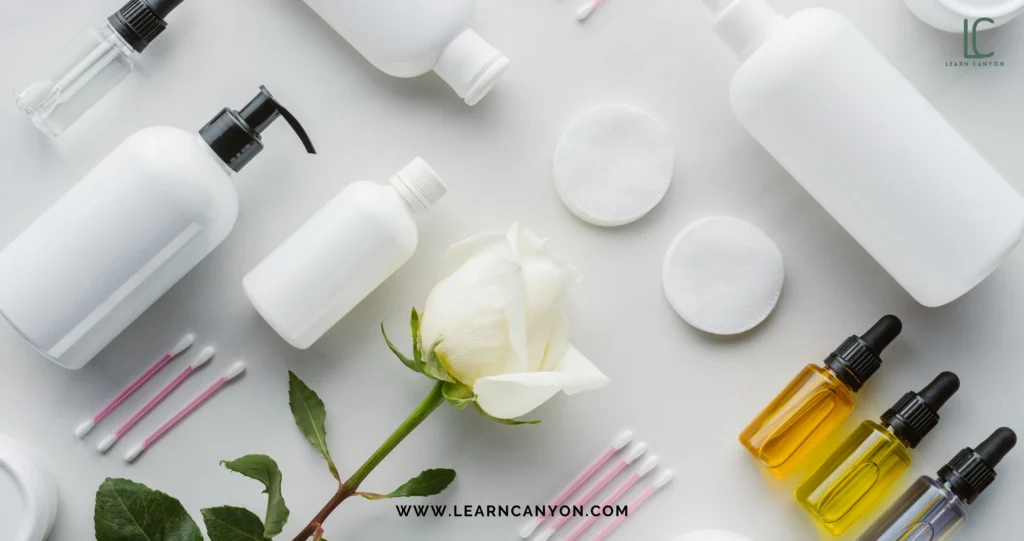
Cost-Effective Product Development for Skincare Startups
Developing a skincare product can be expensive, but with strategic planning and resource management, startups can significantly reduce costs without compromising quality.
Here are some strategies for cost-effective product development for skincare startups:
- Conduct Thorough Market Research
- Understand the needs, preferences, and pain points of your skincare target market to create products that meet real demand, avoiding unnecessary expenditure on unwanted beauty products.
- Study successful and unsuccessful beauty products from skincare competitors to learn what works and what doesn’t, saving time and money on trial and error.
2. Start Small with MVP (Minimum Viable Product)
- Develop a basic version of your product with essential features to test the market response before investing heavily in advanced formulations.
- Use feedback from initial customers to refine and improve the product, reducing the risk of costly mistakes.
3. Partner with Contract Manufacturers
- Consider private labelling, where you rebrand existing products from manufacturers, allowing you to enter the market quickly and with lower initial costs.
- Negotiate with manufacturers for small batch production runs to minimize initial investment and avoid excess inventory.
4. Leverage Freelancers and Consultants
- Hire freelance cosmetic formulators, chemists, and regulatory experts on a project basis instead of full-time employees to save on salaries and benefits.
- Use industry consultants for critical stages like formulation, testing, and compliance, leveraging their expertise without long-term commitments.
5. Utilize Affordable and Accessible Ingredients
- Source locally available natural ingredients that are often more affordable and have a strong market appeal due to their sustainability and purity.
- Use organic ingredients that serve multiple purposes (e.g., moisturizing and anti-inflammatory properties) to reduce the number of components needed in your formulations.
Here, at Learn Canyon, we always prefer organic resources over synthetic ones as we believe in cruelty-free, vegan and sustainable cosmetic production in our labs which are equipped with advanced cosmetic formulation tools and techniques to train people to create their cosmetic products and to enhance their formulation skills.
6. DIY Product Testing and Iteration
- Conduct initial cosmetic product testing in-house with friends, family, and small focus groups to gather feedback before investing in expensive third-party testing.
- Continuously refine your cosmetic formulations based on feedback and in-house testing to improve the product incrementally and cost-effectively.
7. Focus on Branding and Packaging
- Start with simple, cost-effective packaging that still looks professional. You can upgrade to more premium packaging as your brand grows.
- Invest in digital marketing strategies like social media, influencer partnerships, and content marketing, which can be more cost-effective and have a broad reach compared to traditional marketing methods.
8. Optimize Supply Chain Management
- Once you have validated your product, buy ingredients and packaging materials in bulk to benefit from volume discounts.
- Optimize your logistics and supply chain to minimize costs associated with storage, shipping, and handling.
9. Secure Grants and Support
- Apply for grants and funding opportunities from government agencies, industry associations, and nonprofit organizations that support innovation in skincare and cosmetics.
- Join startup incubators or accelerators that provide funding, mentorship, and resources to reduce your development costs.
Generating Revenue and Managing Costs
Generating revenue and managing costs are crucial for the success and sustainability of a skincare startup.
- You can generate revenue through direct-to-consumer sales such as through E-commerce platforms and subscription services
- Through retail partnerships such as boutique stores and larger retailers
- Through online marketplaces such as Amazon, eBay and niche platforms.
- Through Influencer marketing such as collaborations and sponsored content
- Social media and content marketing can help generate revenue through engagement and educational content.
- Promotions and loyalty programs
Managing costs can be a real headache thing but it is the most important category in managing your skincare startup;
- Using lean operations such as trying small initial batches and outsourcing (like marketing, IT, and logistics to reduce overhead costs)
- Using efficient supply chain management such as bulk purchasing and local sourcing
- Cost-effective marketing; low-cost social media platforms to promote the brand and email marketing to retain customers.
- Financial planning and budgeting to track costs
- Using minimalist packaging such as eco-friendly materials and bulk shipping.
- Energy efficiency such as utilizing efficient equipment to reduce utility costs and encourage remote work.
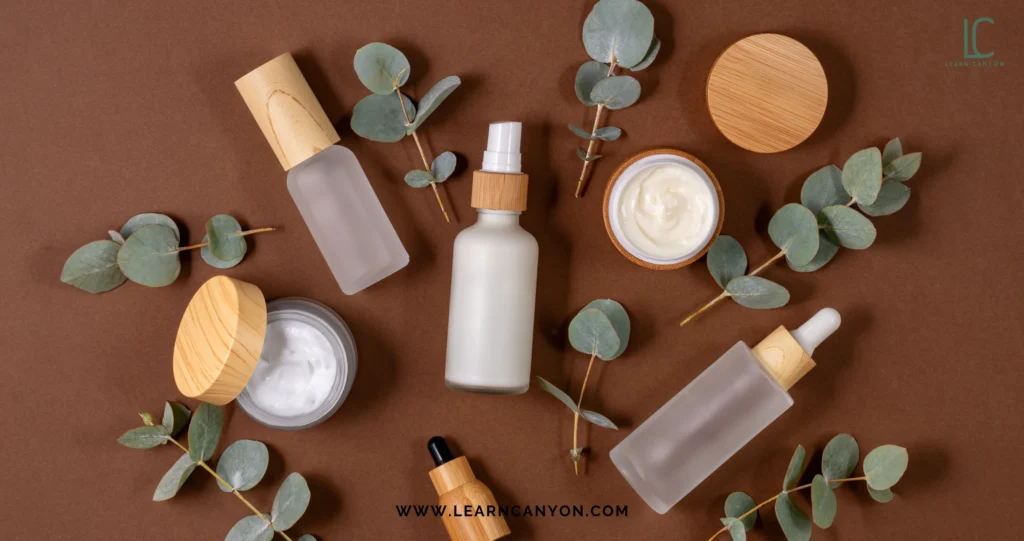
Preparing Financial Projections
Creating realistic and compelling financial projections is crucial for a skincare startup to attract investors, secure funding, and manage growth.
Here’s a step-by-step guide to developing financial projections:
- Understanding the market
Market research, competitive analysis and target audience must be done to understand the target audience’s buying behavior.
- Estimate Revenue
- Sales Forecast:
- Units Sold: Estimate the number of units you expect to sell monthly and annually.
- Average Selling Price (ASP): Determine the average price per unit based on your pricing strategy and market research.
- Revenue Formula: Revenue = Units Sold x Average Selling Price.
- Revenue Streams:
- Direct Sales: Include e-commerce, retail partnerships, and marketplace sales.
- Subscriptions: Estimate revenue from subscription services if applicable.
3. Calculate Cost of Goods Sold (COGS)
- Direct Costs:
- Materials: Estimate the cost of ingredients and packaging per unit.
- Manufacturing: Include production costs, labor, and overhead expenses.
- Shipping: Factor in the cost of shipping and handling.
- COGS Formula: COGS = (Material Cost + Manufacturing Cost + Shipping Cost) x Units Sold.
4. Project Operating Expenses
- Fixed Expenses:
- Rent: Costs for office space, warehousing, or retail locations.
- Salaries: Wages for full-time and part-time employees.
- Utilities: Electricity, water, internet, etc.
- Variable Expenses:
- Marketing: Advertising, promotions, influencer partnerships, etc.
- Logistics: Shipping and handling costs for deliveries.
- R&D: Research and development costs for new product formulations.
- Administrative: Office supplies, software subscriptions, legal fees, etc.
5. Determine Gross and Net Profit
- Gross Profit: Revenue – COGS.
- Operating Profit: Gross Profit – Operating Expenses.
- Net Profit: Operating Profit – Taxes and Interest (if applicable).
6. Create Financial Statements
- Income Statement:
- Revenue: Total projected revenue.
- COGS: Total cost of goods sold.
- Gross Profit: Revenue – COGS.
- Operating Expenses: Total fixed and variable expenses.
- Net Profit: Gross Profit – Operating Expenses.
- Cash Flow Statement:
- Cash Inflows: Sales revenue, investment capital, loans.
- Cash Outflows: COGS, operating expenses, capital expenditures.
- Net Cash Flow: Cash Inflows – Cash Outflows.
- Balance Sheet:
- Assets: Cash, inventory, equipment, etc.
- Liabilities: Loans, accounts payable, etc.
- Equity: Owner’s equity and retained earnings.
7. Assumptions and Justifications
- Market Growth: Justify your market growth assumptions based on industry reports and market trends.
- Pricing Strategy: Explain your pricing strategy and how it compares to competitors.
- Sales Channels: Detail your sales channels and the expected contribution from each.
- Expense Management: Describe your approach to managing costs and achieving operational efficiency.
Pitching to Investors
Tips for delivering a compelling pitch to potential investors for your skincare startup;
- Start with a strong opening; hook your audience with a compelling story. Share your passion and personal connection to the skincare industry to establish credibility and enthusiasm.
- Precisely define the problems; identify the specific skincare problem your product addresses. Highlight how this problem affects consumers and why it’s significant.
- Present the Solution; clearly articulate what makes your product unique and better than existing solutions. Describe the key benefits and features of your product that solve the identified problem.
- Define your target market segments and explain why they are attractive.
- Business model explanation; Explain how your startup will make money (e.g., direct sales, subscriptions, retail partnerships). Discuss your pricing strategy and how it fits within the market
- Detail your marketing and sales strategies to acquire and retain customers. Explain how you will distribute your products (e.g., online, retail, wholesale).
- Competitive Analysis and Financial Projections must be done properly and should be highlighted in front of those investors.
- Funding Requirements; clearly state how much funding you are seeking. Explain how you will use the funds to achieve your business objectives and drive growth. Describe the potential return on investment for the investors.
- Engage Investors with a strong call to action, inviting investors to ask questions, schedule a follow-up meeting, or join your journey.
Conclusion
Securing funding for your skincare startup requires a well-rounded approach that combines a compelling business plan, strategic financial projections, and a clear understanding of the market. To ensure your financial planning is solid and appealing to potential investors first prepare a comprehensive business plan, realistic financial projections, diverse fundraising strategies, cost management, revenue generation, and a compelling investor pitch. By following these pointers and remaining adaptable to market changes, you can effectively navigate the financial landscape of the skincare industry. With thorough planning, strategic execution, and a clear vision, your skincare startup can secure the funding needed to thrive and grow in a competitive market.
To remain steadfast in your skincare startup, Learn Canyon offers advanced organic skincare formulation courses to its learners and formulators, that promise them to not only create effective cosmetic products but also teach people how to start their skincare startup cost-effectively!
Why wait? Talk to us right away!
References
- https://createyourskincare.com/funding-options-for-your-skincare-startup/
- https://fastercapital.com/content/Cosmetic-startup-funding-Cosmetic-Startup-Funding–How-to-Get-Your-Business-Off-the-Ground.html
- https://www.seedstars.com/content-hub/learning-resources/fundraising-strategy-early-stage-startup-z/
- https://www.inno-foodproducts-brainbox.com/2018/06/14/6-essential-steps-in-new-cosmetic-product-development/


